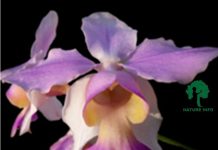Scientific name: Trema orientalis (L.) Blume
Family: Ulmaceae
Synonym: Trema africana Blume
Bengali/Vernacular name: Kapaisha, Kapashia, Jiban, Jigal, Chikan, Godorjiga, Banjiga.
Tribal name: Shimutta (Chakma), Phakram (Garo), Sai saw apang (Marma), Sukorsamila (Tanchangya).
English name: Indian charcoal tree, Indian nettle, Oriental nettle, Pigeon wood.
Description of the plant: A small tree, 5-8 m high, with elongated branches. Leaves alternate, ovate-lanceolate to elliptic-lanceolate, 5-15 cm long, base obliquely cordate, apex acute to acuminate, crenate-serrulate, upper surface greenish, under surface densely silvery tomentose, nerves 4-6 pairs. Flowers 5-merous, greenish, unisexual, subsessile, minute in axillary cymes. Fruit a drupe, more or less globose, black when mature.

Plant parts used: Leaf, bark, root.
Ethnomedicinal uses: Decoction prepared from the bark of the plant is used for gargling four times a day for seven days to treat toothache.
Bark infusion is drunk to control dysentery.
Decoction prepared from the bark of the plant is administered in hypertension.
Bark of the plant is used as a poultice for muscular pain.
A fresh juice is extracted from the roots of the plant is taken three times a day (5 ml amount each time) for two days to treat stomachache.
Bark decoction is used for the treatment of cough, sore throat, asthma, bronchitis, gonorrhoea, malaria, and yellow fever.
Distribution: It is found in the forests of Chittagong, Cox’s Bazar, Sylhet, Dhaka, Mymensingh , Dinajpur, and the Chittagong Hill Tracts. Also grows in the villages all over the country.
Is this plant misidentified? If yes, please tell us….















… [Trackback]
[…] Find More on to that Topic: natureinfo.com.bd/trema-orientalis/ […]
… [Trackback]
[…] Info to that Topic: natureinfo.com.bd/trema-orientalis/ […]